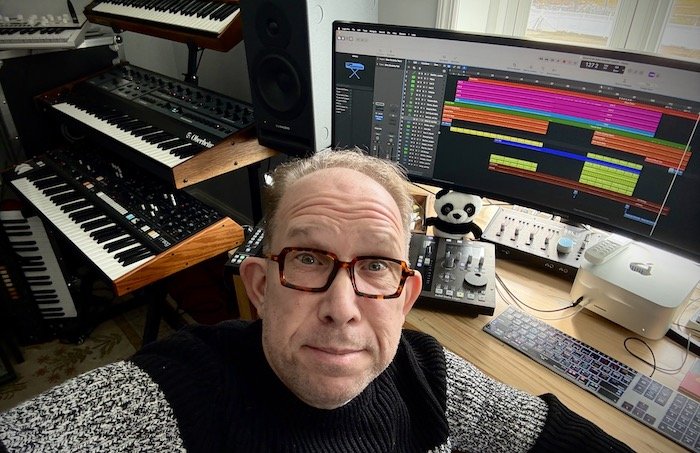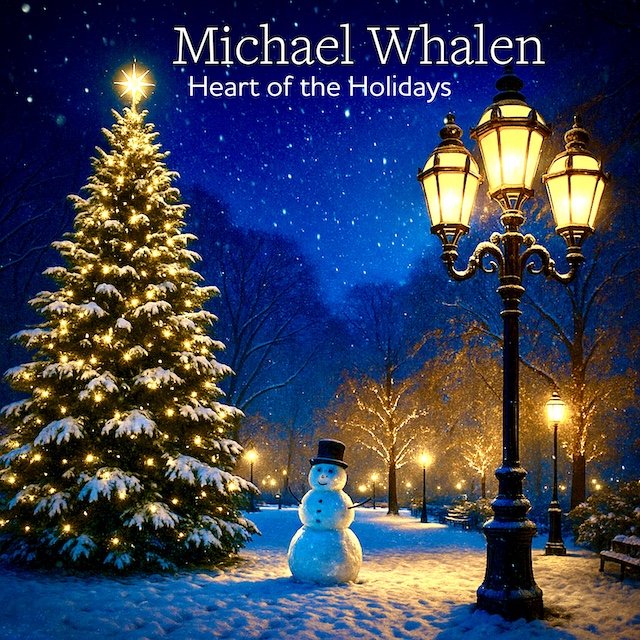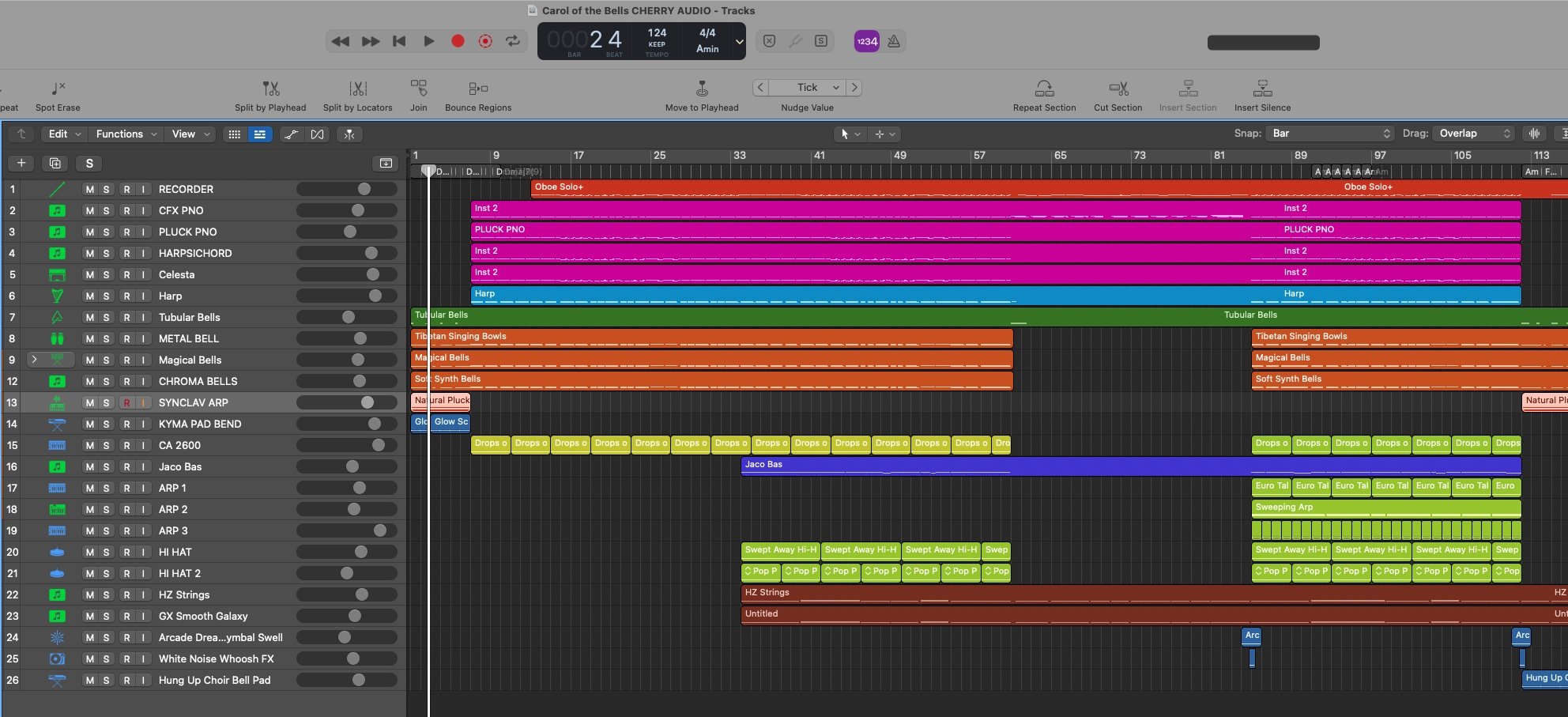Getting to the "Heart of the Holidays" with Michael Whalen

How Michael Whalen Composed a Christmas Album in 10 Days with Cherry Audio
In an era when digital tools are reshaping music production, it's inspiring to see veteran composers harness new technology to accelerate their creative process. Two-time Emmy® award-winning composer Michael Whalen recently sat down with Cherry Audio to discuss his new Christmas album, "Heart of the Holidays," revealing how he composed the entire record in just 10 days using a suite of Cherry Audio synthesizers. This interview offers a rare glimpse into the workflow of a master, blending decades of experience with the cutting-edge capabilities of modern virtual instruments.

Throughout the conversation, Michael details his creative philosophy, which involves separating sound design from the writing process. By creating a dedicated palette of sounds beforehand, he can focus entirely on composition when inspiration strikes. He highlights several key Cherry Audio instruments that were instrumental to the album's sound, including the GX-80, Rhodes Chroma, and CA2600, noting their reliability and unique sonic character. One particularly memorable insight was his comparison of hardware versus software; despite owning a vintage hardware ARP 2600, he now uses Cherry Audio's version 98% of the time due to its "bulletproof performance" and expediency.
Whalen also shares his 30-year journey to finally create this Christmas album, driven by a desire to offer listeners a sense of safety and comfort. His approach, guided by the energy of the moment and a trust in his first instincts, is a powerful lesson for any creative professional."

On The 30-Year Dream
"What’s really interesting about this music is that I’ve wanted to make this record for about 30 years, and I finally did it in just ten days. It's not that I wasn’t thinking about it for years; the fascinating part is that if I were to sit down right now and create ten arrangements of these ten songs, they would probably turn out differently.
A lot of it has to do with being present in the energy of the moment and allowing that to shape your work. Many artists tend to second-guess themselves, but I believe that your first instinct is often the most genuine. That initial freshness, that energy you have, it’s the most exciting part of being an artist. When you find that spark, you just have to go for it."
A 10-Day Composition Sprint
"The Christmas project was something I set for myself with a rather unusual deadline. I decided that I would create one track each day for ten days, and by the end, I would have an album. I’m known for producing commercial and television music, and I can work quickly. When I face a tight deadline, Cherry Audio is always my top choice. I have a solid understanding of what I like and how to achieve it without getting bogged down.
I appreciate having a deadline. Like Duke Ellington said, "I don't need time, I need a deadline." For me, having a deadline is essential. Don't talk to me about anything else. Like, when do you want this? You want this today? Sounds great. Let's go. For example, I recently completed a big promotional project for a friend, and it turned out that half of the tracks I used were from Cherry Audio."
"For "Heart of the Holidays," I established this arbitrary 10-day deadline because I didn’t want the project to drag on indefinitely. So, within that framework, I focused on how to make everything sound great while adhering to my timeline. Fortunately, everything came together perfectly. I completed all the arrangements in ten days and spent a couple more days fine-tuning the mix. In total, the entire project was finished in just two weeks."
Workflow Philosophy: Sound Design vs. Composing
"Before I start something like the Christmas project, I make sure to dedicate time to sound design. Unlike larger projects, for the current one I'm working on, I spent about a month creating sounds before I even wrote a single note of music. I ended up with around 350 to 400 finished sounds, including patches. About 150 of those sounds come from Cherry Audio synths. Additionally, I've processed or created another 100 to 150 sounds using some of my old Synclavier equipment and other sources.
From my experience, many musicians get sidetracked. They'll start on something, create a sound, and then fall into the trap of sound-making, losing sight of the creative energy that was driving the music. To avoid this, I try to be very disciplined. I allocate specific times for sound design and separate times for writing music. When I'm writing, I approach it like a painter would; I prepare my palette in advance, almost like how Hans Zimmer sets up his templates for film scores. In his case, he spends two-thirds of his time assembling sounds and doing research and development, while the actual music composition takes up only about 30% of his time.
I believe we live in a time when distractions can hinder creativity. That's why I treat sound design and music composition as distinct phases. Once I finish writing the music, which has a clear beginning, middle, and end, I assess if there's anything missing. I make a list of ten things I should create or explore further from a sound perspective. After that, I might spend a few days back in sound design with a specific target in mind. This structured approach makes it easier for me to navigate the creative process."
Cherry Audio Synths and Carol of the Bells
"Carol of the Bells" is driven by two main factors: a loop that I created using Cherry Audio’s CA2600, and my affinity for working with both it and the ARP 2600. I really enjoy using them because the interfaces are user-friendly and don’t get in the way. Interestingly, I have a hardware 2600 right here on my desk, but I only use it about 2% of the time, while I rely on CA2600 for 98% of my work. I appreciate the hardware for certain applications, and people give me a hard time because, you know, I have all this hardware stuff. But most of this is for solo stuff. When I’m actually arranging music, I prefer to work in the box.
What I like about the GX-80 is that it combines the uniqueness of the Yamaha GX-1 with the versatility of the CS-80. Having played the GX-1 for two weeks at EMEAPP in 2022, I can say it’s truly a peculiar instrument. It has a very distinctive sound quality, and while you can make some adjustments, it fundamentally has a specific character. So, it's really a matter of whether you appreciate its sound or not."
In another place, I wanted to create a sound reminiscent of church chimes, aiming for something that isn't quite bass but leans more toward a baritone quality. To achieve this, I made a variation of a sound from the Rhodes Chroma, layering it with other instruments. I use layering quite a bit in sound design. Even though something might sound like, for instance, a nice pad, it might actually a combination of eight different sounds. For me, everything revolves around imaging, what happens left or right, up or down. It's crucial to me; I don't want a straightforward pad sound because that would make the overall texture feel thin. I strive for a huge, cinematic quality, ensuring that nothing on the left side mirrors what's happening on the right."

"It can be more interesting if elements affect each other; for instance, if a sound occurs on the right and is echoed on the left or vice versa, that's fine. With a synth sound, you can create a captivating effect by offsetting the sounds; perhaps have one sample lean a bit to the left while a synth sound shadows it slightly to the right. This approach generates a dynamic feeling, making it seem as though the sound is moving throughout the space. It might sound odd in this context, but it creates an organic quality, almost as if the electronic sound is existing within a physical room.
From a sound design standpoint, I think I think the combination of using sampled sounds and synth sounds as a way of kind of going back and forth is really interesting."
On the Reception to "Heart of the Holidays"
"Now that it's November, people are really getting into it. I have more videos I'm planning to release, and "Heart of the Holidays" is now playing on the radio a lot. Over the past weekend, I got picked up by about 20 stations, which has been fantastic. I'm really happy about that!
Interestingly, my wife and I have had a playful debate over the years. We’ve been together for 18 years, and early on, I wanted to start playing Christmas music right after Halloween. "No, no, no, you can't do that," she'd say. Fast forward to now, and a couple of weeks ago, my album came out. While we were in the car, I quietly hit the play button, and to my surprise, she said, "Oh, this is so nice."
She explained that she now loves the music because it creates such a wonderful vibe and nice energy. I’ve received similar feedback from many people, noting that it really has a great atmosphere. This year, I think people are craving an escape and desire to create a safe cocoon around themselves, and I truly believe this music can help with that."
We wish very Happy Holidays to Michael and his family, and extend our sincere gratitude for his unwavering support and for consistently sharing phenomenal music with us year after year!
Michael Whalen is two-time Emmy® Award winning composer, producer, music supervisor, and recording artist celebrated for his work in television, film, and advertising. Over a career spanning three decades, he has composed more than 850 television and film scores and thousands of commercial jingles. His credits include theme work for Good Morning America, scores for Netflix, Disney, HBO and BBC and more, and his very popular solo albums traverse ambient, solo piano, and electronic genres which have accumulated more than 1.3 billion streams. In addition to his creative work, Whalen has the general manager and head of A&R at Real Music in Los Angeles and taught as an adjunct professor at The City College of New York, The Berklee College of Music and NYU’s Clive Davis Institute of Recorded Music. Michael has also worked with over 100 artists from around the world at his boutique Artist Development and label services company Artist Expansion. Michael is also the host of the “Artist Expansion Podcast” on YouTube.
Additional Michael Whalen Links: Michael Whalen Music / Spotify / Apple Music / Facebook